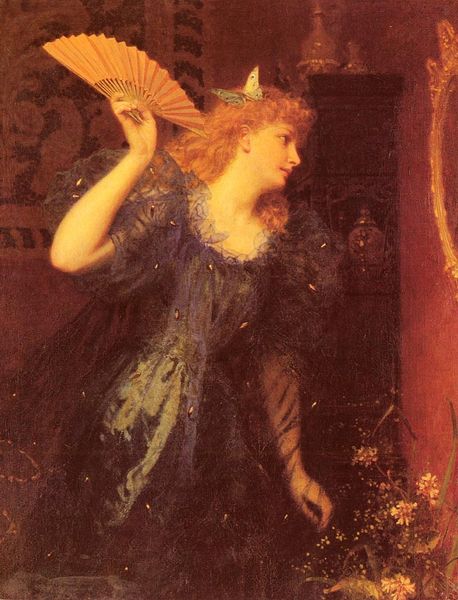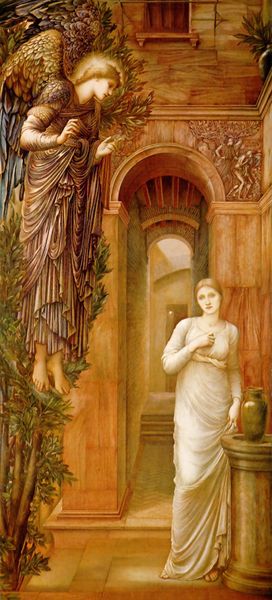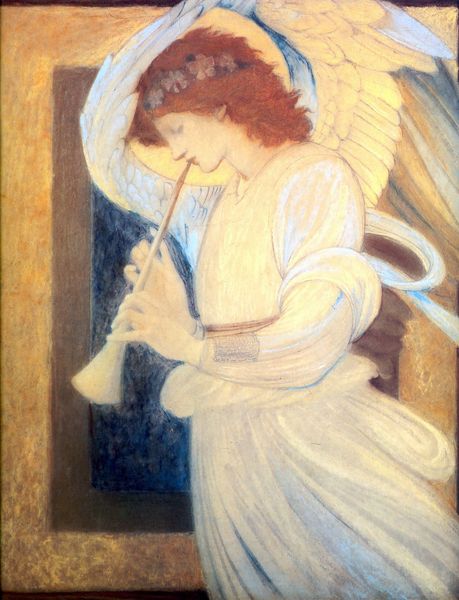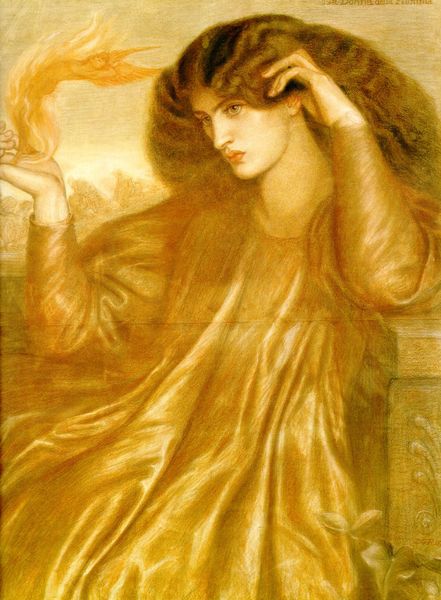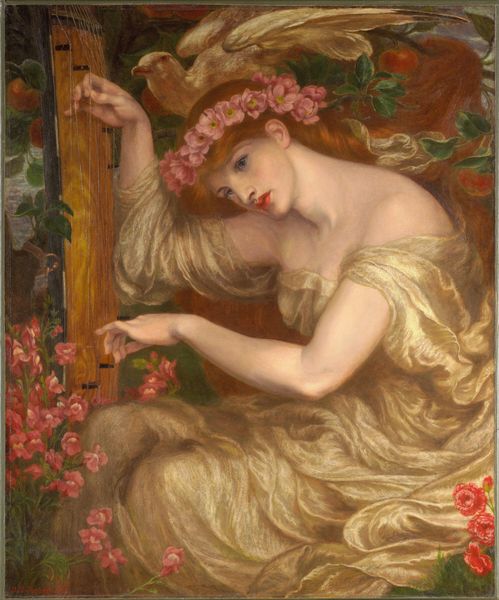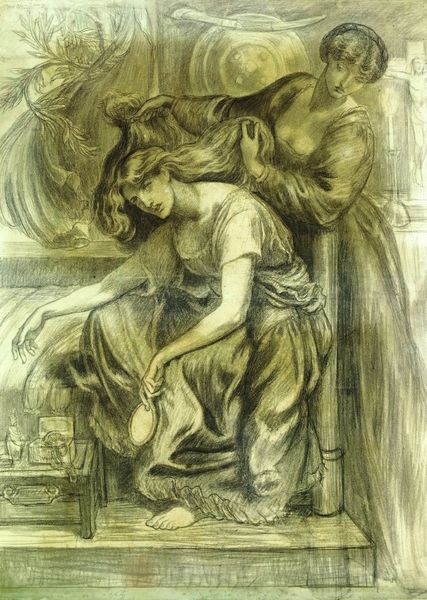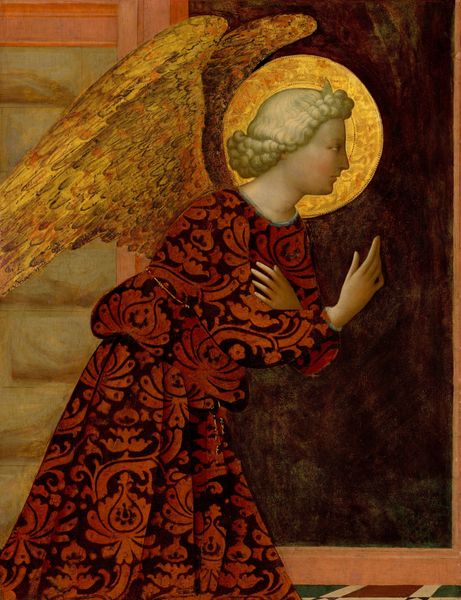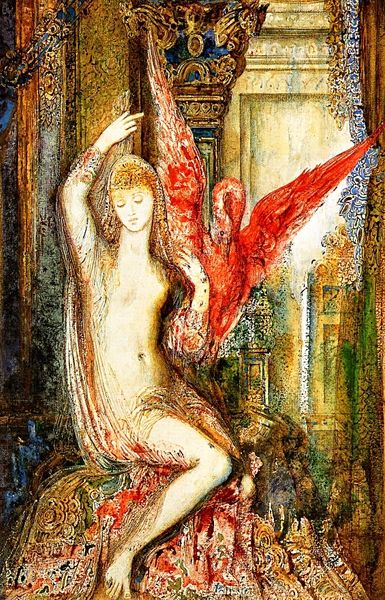
Copyright: Public domain
Curator: Before us hangs Edward Burne-Jones’ "Angel", an oil painting created in 1881, currently residing at the Kelvingrove Art Gallery and Museum in Glasgow. Editor: My immediate sense is one of serene melancholy. The muted blues and browns create a very somber mood. There's an ethereal quality, but it's also tinged with a profound sadness, almost as if this angel carries a heavy burden. Curator: Indeed. Burne-Jones, as a key figure of the Pre-Raphaelite movement, often used art to critique the rapid industrialization of Britain and, in this particular work, seems to portray a kind of divine detachment from the earthly realm. Editor: I'm drawn to the angel's trumpet. Music, historically, is a powerful symbol, often representing harmony, communication, or even a divine call to action. But here, it almost feels muted. The color is so muted. Is the music bringing salvation or is it simply a lament? Curator: That ambiguity is central to Burne-Jones' practice. Angels, historically, are powerful symbols within Christian art and theology. Their depiction reflects societal values and theological interpretations of the era, reflecting not so much popular culture but, rather, art meant for contemplation and private devotional use. Editor: Those dark wings also intrigue me. Angels are often depicted with pure white wings symbolizing innocence, but these seem more formidable, almost ominous. The contrast suggests a duality – a blend of divine and perhaps even human, earthly qualities. And her facial expression: contemplative but very distant. She's there and she's not there, almost ghostly. Curator: Precisely. The placement within the Kelvingrove also adds to its resonance. Glasgow, during Burne-Jones' time, was undergoing massive industrial expansion, resulting in social displacement and upheaval. Displaying "Angel" now serves as a stark reminder of the socio-economic disparities of the late 19th century and raises relevant, still very pertinent, concerns around spiritual versus material advancement. Editor: Seeing her there among us makes the questions asked in this painting seem more real. The overall composition leads the viewer towards contemplation, and this Angel seems less like a celestial messenger, more like a profound introspective allegory on existence itself. Curator: I agree completely. Burne-Jones provides the stage, and the audience must actively engage with the complexities of faith, beauty, and social responsibility. Editor: And perhaps, consider what it really means to "hear" that music today.
Comments
No comments
Be the first to comment and join the conversation on the ultimate creative platform.
